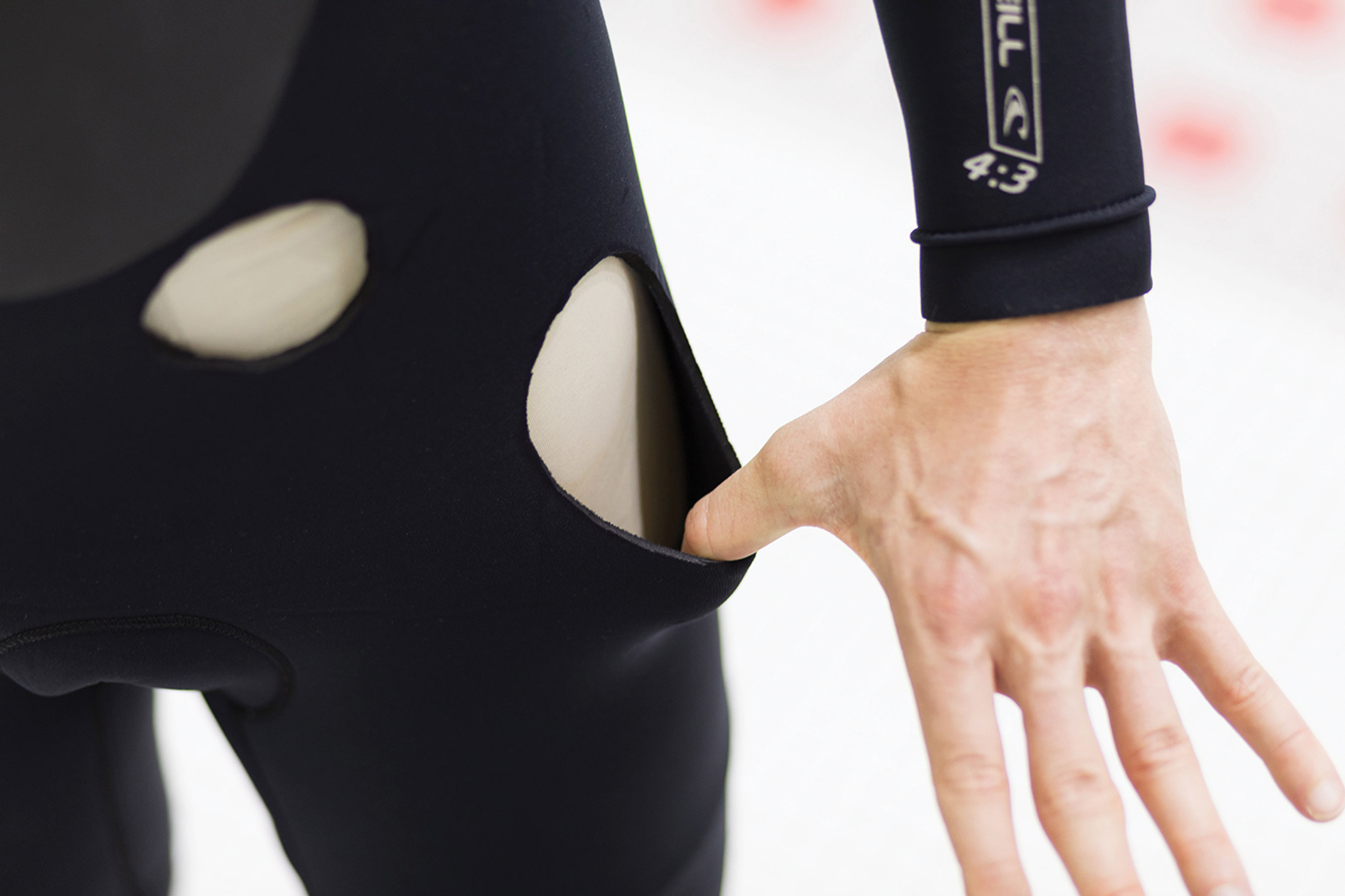
When divers carry out rescue missions in frigid waters, standard wetsuits offer less than an hour’s protection. The Navy and researchers who work in polar waters have long sought ways of extending that survival time. Now a pair of MIT engineering professors and their students have come up with a simple and effective way of treating a conventional wetsuit so that it protects people three times longer.
The process works by simply placing a standard neoprene wetsuit inside a pressure tank autoclave no bigger than a beer keg, filled with a heavy inert gas, for about a day. The effects then last for about 20 hours, far longer than anyone would spend on a dive, explains co-inventor Jacopo Buongiorno, a professor of nuclear science and engineering and an avid diver himself.
Buongiorno and chemical engineering professor Michael Strano started the project after meeting with a group of Navy SEALs, the elite special-operations diving corps, as part of a Defense Department research program. They looked at mechanisms that have evolved to allow various animals to survive in frigid waters: fur or feathers (which trap air pockets for external insulation), internally generated heat, and blubber, a solid layer of insulating material.
After simulations and lab tests, the researchers combined two of these approaches to create a blubber-like insulating material that also makes use of trapped pockets of gas.
Strano and Buongiorno found that if the air trapped in neoprene, the standard wetsuit material, is replaced with a heavy inert gas such as xenon or krypton, the material’s insulating properties increase dramatically. “We set a record for the world’s lowest-thermal-conductivity garment,” Strano says. It transfers away almost as little heat as air itself, he adds: “It’s like wearing a coat of air.” In water colder than 10 °C, the suit is predicted to extend a diver’s functional time from less than an hour to two or three hours.
The result could be a boon not just to those in the most extreme environments, but to anyone who uses wetsuits in cold waters, including swimmers, athletes, surfers, and professional divers. In addition, the researchers say, the process could be used to make wetsuits that are no more insulating than normal but much thinner, allowing more comfort and freedom of movement.
Keep Reading
Most Popular
Large language models can do jaw-dropping things. But nobody knows exactly why.
And that's a problem. Figuring it out is one of the biggest scientific puzzles of our time and a crucial step towards controlling more powerful future models.
How scientists traced a mysterious covid case back to six toilets
When wastewater surveillance turns into a hunt for a single infected individual, the ethics get tricky.
The problem with plug-in hybrids? Their drivers.
Plug-in hybrids are often sold as a transition to EVs, but new data from Europe shows we’re still underestimating the emissions they produce.
Stay connected
Get the latest updates from
MIT Technology Review
Discover special offers, top stories, upcoming events, and more.